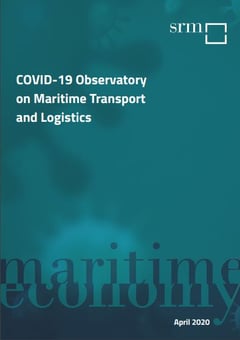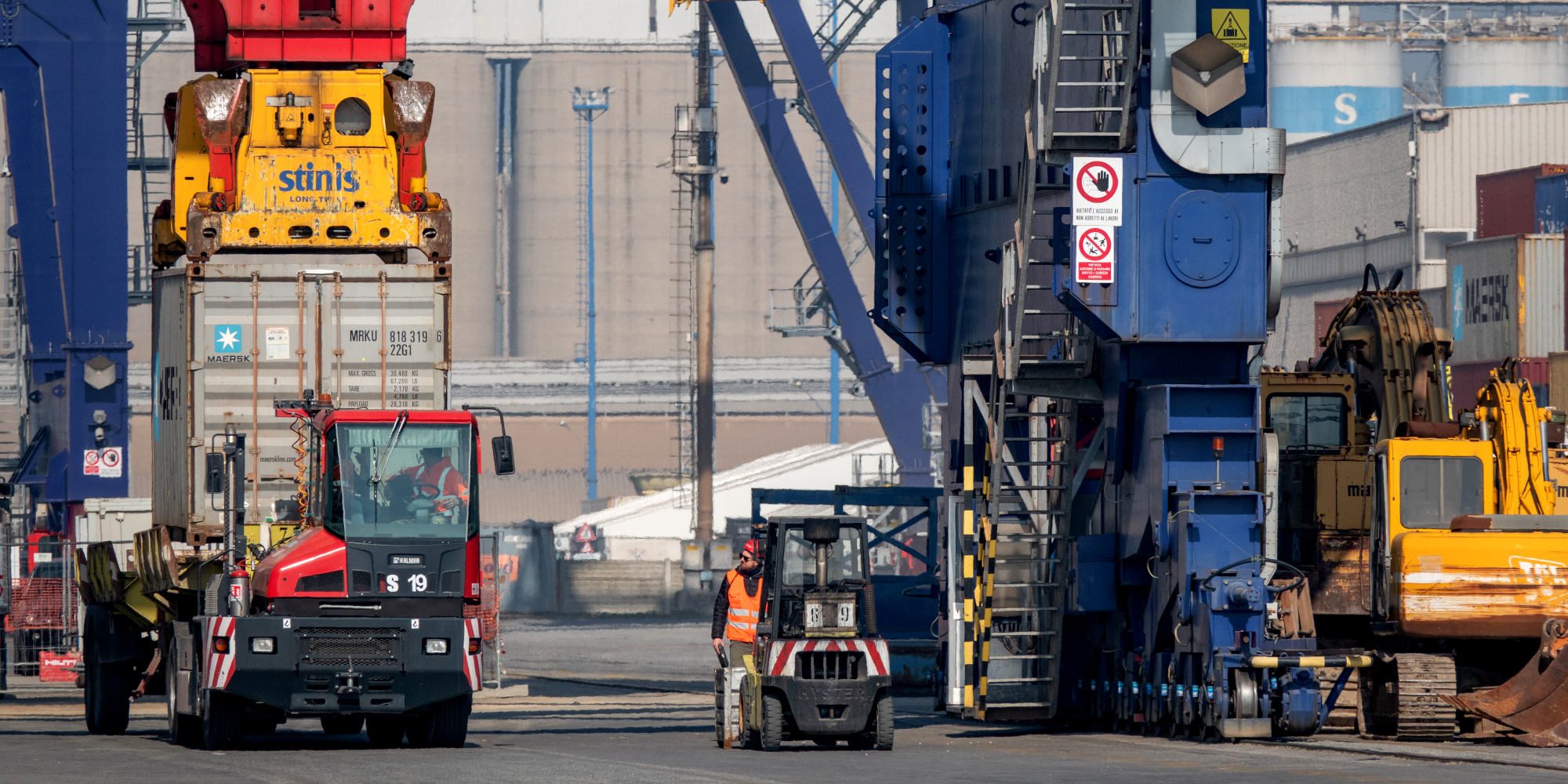What has been the impact of the COVID-19 emergency on Italian ports?
A reduction in the volumes handled is the main critical issue Italian ports have had to face. Due to the closure of a large part of factories across the world, ships have objectively embarked less freight, and proof of that can be found in the numerous sailings cancelled by the main maritime carriers and in the data shared by the ports of Shanghai and Rotterdam, respectively first in the world and first in Europe for container traffic, with the former recording a -8.5% (in the first four months of 2020) and the latter a -4.7% (in the first quarter of 2020).
Although some sectors have remained open during the emergency, among which agrifood and healthcare, many others were on a halt for a long time, including the automotive sector, which registered significant losses in exports and imports.
SRM has estimated a 20-25% reduction in the total freight traffic handled in Italian ports in 2020, corresponding to a fall of 90-100 million tons of goods. All of this has a negative impact both on our logistics and maritime system and on our manufacturing system. The Suez Canal, which is an indicator for maritime traffic in the Mediterranean, recorded a 6.4% year-on-year drop in transits in June.
Has SRM made any estimates on the impact of COVID-19 on the Italian maritime system?
Yes, we have, focusing on trade, which is a proxy for international traffic. The potential value of containerised import/export for Italy equals every year to about 190 billions of euro. During the emergency, SRM has hypothesised three scenarios for the end of 2020. The most optimistic scenario, which implies a resumption of Italian import/export in June, foresees a deadweight loss of about 22%; the second scenario, which implies a resumption in September, foresees a subsequent loss of around 33-35%; the most pessimistic scenario, which implies a resumption only in 2021, foresees instead a loss of 50%.
These are obviously only forecasts, although based on robust reasoning; they have to be monitored and reviewed periodically. Even more so if, I hope not, the virus comes back at the end of the year. In that case, however, it will find us more ready to respond.
SRM has conducted a survey with several Italian opinion leaders on the impact of COVID-19 on logistics and maritime economy. According to those interviewed, what are the crucial issues the sector has had to face?
In order to better understand the results of our survey, it should be taken into account that it was conducted at the height of the emergency. The respondents include Assoporti, Confitarma, Confetra, Federagenti, Fedespedi and five Italian port authorities. The main problems reported include the liquidity crisis for small and medium-sized enterprises (SMEs) and congestion at crossings.
The liquidity crisis has hit all sectors, from logistics – which comprises road, sea, rail, and air – to textile and catering. Within logistics, the sector hit the hardest is road freight transport, which is characterised by a highly parcellated structure with small enterprises finding themselves suddenly without goods to transport, with unpaid invoices, and without customers, but still having to bear fixed costs.
The congestion at crossings reported is instead a new phenomenon, meaning that strengthening checks during the emergency has resulted in cargo being handled more slowly. The fact that goods arrived in ports and containers were unloaded without being able to be delivered, as businesses were closed, has been another important problem, then resolved by the government at a later stage with the reopening of warehouses.
However, the survey also shows a rather interesting optimistic fact, as many respondents believed that the Italian logistics and port system was so strong that it could handle a three-month period in a crisis of this scale.
 To learn more on this topic, you can download the report by the COVID-19 Observatory on Maritime Transport and Logistics from SRM - Studi e Ricerche per il Mezzogiorno website
To learn more on this topic, you can download the report by the COVID-19 Observatory on Maritime Transport and Logistics from SRM - Studi e Ricerche per il Mezzogiorno website
Let us move away from Italy and consider a wider picture. What has been the impact of the COVID-19 emergency on the maritime industry and the logistics sector at a global level?
The drop in the volumes handled caused by the emergency has primarily triggered two interesting phenomena: Blank Sailing and the circumnavigation of the African Cape of Good Hope with the aim of avoiding transiting via the Suez Canal. The first phenomenon consists in the cancellation of sailings of an entire maritime route. The closure of factories has resulted in a reduction of the traffic transported by vessels all over the world which, unable to embark goods, were in fact forced to stay put. Between January and April, we have seen about 400 cancellations of sailings, for an impact of approximately 4.5 million TEU.
The second phenomenon consists in avoiding the Suez Canal. In addition to a reduction in the volumes handled, the COVID-19 emergency has also led to a significant drop in oil prices. In this context, some shipping lines, aiming to save on toll costs, have decided to avoid transiting through the Canal and to circumnavigate Africa, a longer route which has entailed longer waiting times and in some cases delays in deliveries. This phenomenon affects in particular the Mediterranean, because for the latter Suez is the main outlet for traffic towards the Far East.
Drewry has outlined three scenarios which hypothesise the impact of the COVID-19 emergency at a global level: the first foresees a 1.5% rise in the demand for containers in 2020, the second a decrease of 0.5%, the third a drop of 3%. Which scenario do you deem more likely?
I believe that the truth lies in the middle. In order to formulate a hypothesis in this sense, we need to consider that the main importers and exporters of goods at a global level, especially in terms of containers, are countries in the Far East, in particular China. Here are in fact located seven out of the ten biggest commercial ports in the world in terms of container traffic.
Although it was initially believed that the COVID-19 virus could spread pervasively across the whole China, the adoption of particularly restrictive measures allowed China to no longer feature among the top countries by contagion at a global level. For this reason, I believe that the most likely scenario among the three outlined by Drewry is the intermediate one, even though estimates are revised constantly without leaving space for definitive analyses.
I think that we will have a clearer picture around September-October, when data on import/export for the first semester and updated figures on port traffic will be shared.


 Alessandro Panaro, Head of the Maritime & Energy Service of SRM - Research Centre of the Intesa Sanpaolo Group, talks with Contship Italia about the resilience of supply chains, in relation to the COVID-19 emergency and its effects on the maritime transport and port logistics sector.
Alessandro Panaro, Head of the Maritime & Energy Service of SRM - Research Centre of the Intesa Sanpaolo Group, talks with Contship Italia about the resilience of supply chains, in relation to the COVID-19 emergency and its effects on the maritime transport and port logistics sector.
.jpg)